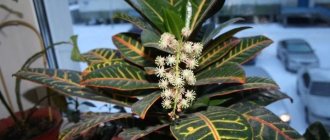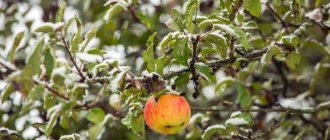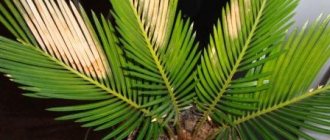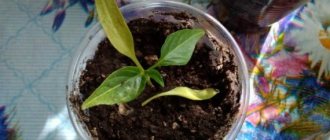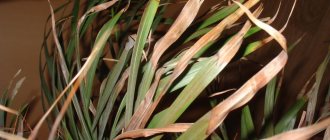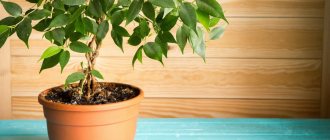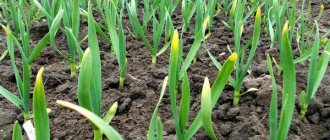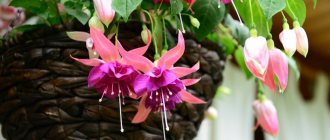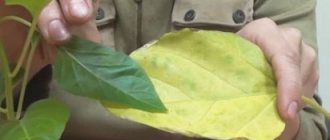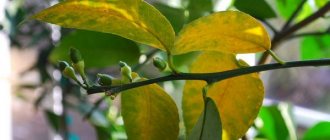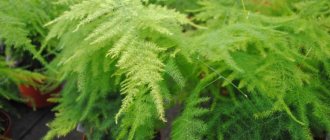Schefflera is not considered a capricious and demanding plant. Subject to simple growing conditions, it pleases the grower with the lush beauty of its foliage. But often inexperienced lovers of exotic plants have problems caring for them. Most often, this plant suddenly begins to drop its leaves.
If no measures are taken, the shefflera may die. And here the most important thing is to establish the cause of leaf fall as quickly as possible in order to save the plant and preserve its beauty. Let's look at the reasons why Schefflera sheds its leaves and what to do.
Main Possible Causes
There are many reasons for Schefflera leaves to fall off. Therefore, when it begins to lose leaves, it can be difficult to determine the cause. Here are the main reasons why Schefflera leaves fall:
- Incorrect watering regime;
- Temperature too low or high;
- Unsuitable air humidity for the plant.
There are other reasons:
- Excess feeding;
- Incorrect lighting;
- Presence of pests.
Most often, improper watering causes leaves to fall off. It can be either too intense or not enough. Although too much and too little moisture affects the plant differently, the plant responds by shedding its leaves.
The temperature regime is also very important for the plant.
Thus, a low temperature in combination with abundant watering very quickly causes stagnation of water and the development of putrefactive bacteria. And this is reflected in the condition of the flower, which, as it rots, begins to lose its leaf blades. The falling of plant leaves is most often affected by insufficient humidity. Dry air causes leaves to dry out and fall off.
High humidity can cause leaf fall only in combination with abundant watering. This growing regime promotes rotting of flower tissues. Other reasons lead to loss of leaves extremely rarely and only in case of gross violation of the rules of care. If the plant is fed too intensively or placed in direct sun, if pests infest it, then it will most likely not be possible to preserve its foliage.
How to save a shefflera. #3 MirLana
Sent
A photo would be nice. How tall are sheffleras? IMHO: During transplantation, the roots were injured, then they flooded. I dry mine on the knuckle of a finger in the summer and up to about 1/2 of a pot in the winter. She is much less afraid of drought than the flood. It’s better to spray one more time than to water it. And two meters from which window? Mine is located in the south-west with light shading - in partial shade it grew very slowly, accordingly: the less light, the easier it is to flood it. And one more thing: if it falls out of the ground, you risk losing the last roots. It must be fixed - tied to a support. Otherwise, new damage will occur. In a humid environment they can rot again. And be sure to sprinkle them with coal. What kind of soil is it sitting in? What type of shefflera? Green or variegated? The latter is more capricious. I would do this: If it is large, put the crown for rooting (it is better to treat the cut with heteroauxin or root and place it in a warm, bright place under a cap), the rest into the pot along the root. If it’s small, I wouldn’t risk cutting it. Place thick drainage (expanded clay, for example) on the bottom, then sprinkle it with crushed coal and loose soil. For Scheffler, I make approximately the following mixture: Vita Terra (or for dracaenas) + coarse sand + red brick (crushed smaller) + vermiculite + coal). Soak for a couple of hours in zircon, then a little (15 - 30 minutes) in phytosporin. Sprinkle the roots with coal and plant them firmly in place. Do not water the ground (there is enough moisture in the store), spray with zircon. When the leaves are dry, put under the bag, but only the tops. It is better to leave the ground open. The first watering is only after it has dried somewhere on the phalanx. It's better to just spray it well. It is normal to water only after new growth. New leaves will appear, which means the roots have already grown.
How tall are sheffleras? IMHO: During transplantation, the roots were injured, then they flooded. I dry mine on the knuckle of a finger in the summer and up to about 1/2 of a pot in the winter. She is much less afraid of drought than the flood. It’s better to spray one more time than to water it. And two meters from which window? Mine is located in the south-west with light shading - in partial shade it grew very slowly, accordingly: the less light, the easier it is to flood it. And one more thing: if it falls out of the ground, you risk losing the last roots. It must be fixed - tied to a support. Otherwise, new damage will occur. In a humid environment they can rot again. And be sure to sprinkle them with coal. What kind of soil is it sitting in? What type of shefflera? Green or variegated? The latter is more capricious. I would do this: If it is large, put the crown for rooting (it is better to treat the cut with heteroauxin or root and place it in a warm, bright place under a cap), the rest into the pot along the root. If it’s small, I wouldn’t risk cutting it. Place thick drainage (expanded clay, for example) on the bottom, then sprinkle it with crushed coal and loose soil. For Scheffler, I make approximately the following mixture: Vita Terra (or for dracaenas) + coarse sand + red brick (crushed smaller) + vermiculite + coal). Soak for a couple of hours in zircon, then a little (15 - 30 minutes) in phytosporin. Sprinkle the roots with coal and plant them firmly in place. Do not water the ground (there is enough moisture in the store), spray with zircon. When the leaves are dry, put under the bag, but only the tops. It is better to leave the ground open. The first watering is only after it has dried somewhere on the phalanx. It's better to just spray it well. It is normal to water only after new growth. New leaves will appear, which means the roots have already grown.
Non-compliance with temperature conditions and solution to the problem
Schefflera does not like temperatures that are too high or too low. The ideal temperature for keeping it is 20-22ºС. It is not recommended to lower the temperature below 17ºС, as the plant will not feel well. And with a further decrease, the shefflera will begin to shed its leaves. Also, at low temperatures, there is a possibility of plant roots rotting, which also very quickly affects its appearance.
Often the flower falls off in a draft, especially in a cold one. Such a sharp change in temperature is unusual for shefflera, which reacts to it with intense leaf fall.
The plant can hardly tolerate summer heat. Temperatures above 25ºС are also unacceptable for him. It can tolerate a slight increase in temperature only if there is abundant watering and increased air humidity.
How to provide the plant with an acceptable temperature regime? In apartment conditions this is not difficult. In summer, you need to put the flower in the shade so that it does not overheat. In winter, shefflera feels great on a lit windowsill. You just need to remove it from heating appliances and from opening window sashes.
Schefflera for the home. Schefflera in the house - signs and tips
Some signs warn against keeping sheflera in the house. But this attractive and easy-to-care plant is still popular among indoor plant lovers.
In the article:
Schefflera in the house
Some blame the shefflera and forbid her to keep her in the house. This is partly true. The plant really knows how to take energy, but the vampire is quite weak. In addition, he prefers negative energy, which has no place in housing. Therefore, sheflera calms and harmonizes the energy of the house. It removes negativity and helps stop quarrels and scandals in the family. The best place for breeding is the bedroom, then it will contribute to sound sleep and productive rest, as well as strengthening the relationship between spouses.
Representatives of some esoteric teachings suggest that knowledge is better absorbed near this home plant. It is placed on the desktop of a schoolchild or student so that he can more productively and quickly absorb information about the sciences he is studying.
It should be remembered that sheflera is a poisonous plant. Many signs, upon closer examination, endow poisonous or strong-smelling plants with such negative traits as energy vampirism.
Schefflera - a predictor plant
There are a number of signs that a cheflera can do this. Many people are so afraid of bad omens that they do not want to notice that this plant also predicts pleasant events. Therefore, it is considered undesirable to keep it in the house, because this way you can find out about impending troubles.
If the Schefflera leaves have darkened, there is a lot of negative energy in the house. Perhaps you should use magic, pay attention to your surroundings - they may cast spells on you.
If a plant drops its leaves, this is also a bad omen. It predicts the illness of a family member or financial failure, and sometimes both. Sheflera leaves are folded before a quarrel or scandal in the family, with friends or colleagues.
If it blooms, but at some point stops growing, expect failure. Most often they are associated with material values, family income or career.
If the cheflera suddenly begins to grow quickly, it means pregnancy. This is the only sign of a positive nature that is associated with a change in the state of the plant.
Schefflera - a plant of money and prosperity
Most of the bad things about this plant are related to career and money. Therefore, it is believed that if you care for it correctly, it brings money.
To attract money, a chef can work at home or in the office. At the same time, the choice of place for it does not play a big role. Its meaning in the home is to attract prosperity for all family members. In the office, the cheflera attracts clients, business partners, facilitates the conclusion of profitable contracts and increases profits. If you want to increase your income or achieve a salary increase, plant this plant near your workplace.
This one most actively helps people born under one of the fire signs of the zodiac - Leo, Sagittarius and Aries, but it is suitable for everyone.
Problems with watering volume
Schefflera is very afraid of waterlogging and stagnation of water in the soil. This can quickly lead to the development of root rot. It is not watered often - about once every 1-2 weeks. The top layer of soil between waterings should dry to a depth of 2-3 cm. In hot weather, the flower is watered more often. When the temperature drops, the watering of the shefflers is significantly reduced.
Violation of the plant's watering schedule is the most common cause of leaf loss. Abundant watering of the flower without drying out the soil will quickly affect the condition of the schefflera leaves - they will darken and begin to fall off. This is the beginning of rotting of the root system.
The fight against root rot is very difficult. If the disease is detected early, drying the soil sometimes helps. But usually it is impossible to do without replanting and revising the root system.
The plant is removed from the pot, the old soil is removed. The roots are examined. If rotten areas are found, they are cut off to living tissue. Then the flower is transplanted into new soil and not watered for several days. It is also useful to treat the root system with fungicidal preparations to prevent further rotting. And only after this watering is carefully resumed.
Insufficient air humidity
Usually the air in a city apartment is not humid enough for growing shefflera. Its leaves often dry out and fall off, exposing the trunk. To prevent this from happening, it is advisable to increase the air humidity near the plant.
There are several ways to increase humidity. The simplest and most widespread is spraying. In hot weather or during the heating season, when the indoor air is especially dry, it is recommended to spray the plant 1-2 times a day. In cool weather, you can carry out this procedure 1-2 times a week.
Keeping shefflera in a deep tray with a moistened substrate gives good results. You can fill the container with expanded clay, coarse sand or pebbles. The substrate should not be wet so that there is no additional moisture in the soil in the pot. Sometimes special air humidifiers are used.
All these methods allow you to provide the plant with comfortable growing conditions. In a humidified atmosphere, Schefflera has a very lush and decorative appearance; its leaves do not fall off for a long time.
Other possible causes of leaf drop
Sometimes the reasons may be:
- Incorrect feeding regime;
- Lack or excess of light;
- Pests of indoor plants.
Insufficient feeding of the plant can lead to a slowdown in its development. Loss of leaves can only be caused by keeping the plant in the same soil for many years without applying fertilizer.
But an excess of fertilizers, and especially nitrogen compounds, leads to damage to the root system. At the same time, the Schefflera leaves turn yellow and fall off. Shefflera should be fertilized very carefully and only in the spring and summer.
Schefflera loves bright, diffused light, but can also tolerate partial shade. The condition of its leaves can only be affected by prolonged exposure to shade or direct sun. A lack of light leads to yellowing and falling of the lower leaves of the plant. If the flower stands in direct sun, light spots - burns - form on its leaves. Over time, the leaves dry out and fall off.
If damaged by spider mites, scale insects or aphids, plants may turn yellow and fall off. But this happens when pests have multiplied on the leaves in very large numbers. To prevent this, you need to regularly inspect the shoots and leaves.
If harmful insects are detected, the flower should be treated with insecticides. As a rule, the treatment is repeated to completely destroy the pests.
Pests
Schefflera, unfortunately, is quite susceptible to damage by harmful insects. Especially often, keeping a flower in conditions of increased dry air leads to a similar problem. Insects, having settled on a plant, infect its tissues, penetrate the roots, and eat the vegetative, green part. The following insects most often infect Schefflera: scale insects, aphids, and spider mites.
What to do
To control the occurrence of pests, regularly inspect the flower to detect them. If insects are noticed, treat the plant twice with a soap solution. With a weak, initial stage of the lesion, this measure is usually sufficient.
But if the pests have managed to spread, a soap solution may not help: in this case, use insecticides. The drug Karbofos, which copes with the main types of pests of domestic plants, has proven itself well. Carry out the treatment on the balcony or veranda, since the pungent odor and suspension of the drug in the air are dangerous for households and animals.
Why do leaves turn yellow, turn black, or wither before falling off?
Even before the Schefflera leaves begin to fall, you can identify errors in caring for the plant. You should not wait for the leaves to fall, as the flower will lose its beauty for a long time. Diagnosis is carried out according to the condition of the plant. Leaves before falling may:
- turn yellow;
- To darken or turn black;
- Fade.
Yellowing and falling of the lower leaves of Schefflera is a natural process. If there are only a few of these records, no need to worry. But massive yellowing indicates damage to the root system. This can happen as a result of the earthen clod drying out, which is extremely undesirable. Also, yellowing of the leaves occurs when the roots are burned by fertilizers.
Usually, if a maintenance error is detected and corrected at the very beginning, the plant will recover and grow new leaves, but the yellowed blades will fall off. But if the plant has already lost most of its green mass, its roots cannot be restored.
Sometimes yellowing of some part of the crown is observed. Most likely, this occurs due to direct sunlight hitting the leaves. At the same time, you need to choose more suitable lighting for the flower.
Schefflera leaves turn black or darken and fall off due to a fungal infection. When the soil is systematically waterlogged, the plantains darken. They may turn brown or even black. Then they fall off. In this case, only replanting into new soil will save the plant from death. All rotten roots and damaged leaves must be removed, and the remaining plant must be treated with antifungal drugs.
Wilting can be observed with a significant increase in temperature. It is urgently necessary to reduce it, otherwise the leaves will begin to dry out and die. Wilting is also observed in open sun. Subsequently, such leaves become covered with burns and dry out. Now you know what to do if Schefflera sheds its leaves.
Diseases
Why does Schefflera shed its leaves?
There are several reasons why an umbrella tree might do this:
- Hypothermia. Schefflera loves coolness, but not drafts and cold (below 13 degrees). If the leaves fall but the trunk is still alive, you can save the flower. To do this, you need to place it in a warmer place, protected from drafts;
- Overheat. The plant is light-loving, but has a negative attitude towards direct sunlight;
It is necessary to change its location to a more comfortable one. In hot weather, spray 2 times a day.
- Low air humidity. In the autumn-winter period, you should keep the plant away from radiators, otherwise leaf fall is inevitable;
- Excessive waterlogging. The frequency of watering the shefflera depends on its place of residence. If it is on the sunny side, the soil dries faster and watering should be done more often with well-settled water. If the flower is in the shade, you should not overwater it, as this can lead to rotting of the root system and falling leaves. In this case, it is necessary to replant it, after removing the rotten part of the roots. Before planting in another container, the root system should be treated with a fungicide or root;
- Lack of light;
- Sudden change of location. Schefflera loves constancy and does not tolerate sudden movements. This is stressful for her and one of the reasons for shedding leaves. It is better to immediately choose the most comfortable place for the “umbrella tree” and not bother it with moving in the future;
- Dense soil and lack of drainage can also cause sudden leaf fall. The soil should be changed to a looser one. Place expanded clay drainage at the bottom of the pot.
They fall off and turn black
Leaves fall for the following reasons:
- Overflow. The plant should not be flooded; excess moisture can cause rotting of the root system and, as a result, blackening and falling off. Watering is necessary when the top layer of the substrate is dry. If there is water left in the tray of the pot after watering, it needs to be drained. If the root system is damaged by rot, shefflera can only be saved by replanting;
- Cold. If you water the shefflera with cold water in a draft or in a cold room, it can catch a cold and get sick. The leaves will begin to turn black and fall off. Watering should be done with well-settled water and the plant should change its place of residence to a more comfortable one;
- Sunburn. As a result of an excess of sunlight, the leaves darken and fall off.
Brown spots
In Schefflera, brown spots on the leaves appear for the following reasons:
- Excessive waterlogging or insufficient watering. Watering the plant should be moderate; you should not allow either waterlogging or drying out of the soil (the appearance of drying cracks on the soil surface);
- Pest damage (scale insects). Scale insect disease also causes the flower's leaves to turn brown and fall off.
Turn yellow and fall off
The Schefflera flower loses its leaves as a result of the natural process of yellowing and dropping of the lower leaves of the adult plant.
This is fine. This disease is associated, first of all, with a violation of the rules of maintenance. If you notice any signs of ill health, then it is necessary to eliminate the problem of care.
Thus, the cause of the fall may be:
- Overmoistening of the soil. It is necessary to reduce watering;
- Lack of nutrition. In this case, the plant should be fed with nitrogen fertilizers (bird droppings);
- Lack of light;
- Drafts.
- Pest infestation. In this case we are talking about mealybugs and spider mites;
The ends are drying out
- Dry air . It is necessary to spray 2 times a day, especially in the summer. In winter, the frequency of spraying is reduced, the plant is placed away from central heating radiators. Spraying helps temporarily. In hot weather, it is advisable to place the plant on a tray with wet expanded clay;
- Drafts can also cause leaf edges to dry out.
Why isn't Schefflera growing?
- Lack of fertilizers. The plant needs feeding;
- Transfer. For healthy growth and the appearance of large Schefflere leaves, replanting is necessary every 2 years.
Schefflera flower
In total, there are about 300 varieties of these deciduous plants, which are scattered along the tropics throughout the Earth. But most of them live in the tropical forests of Southeast Asia, where they come from. In nature, these are most often epiphytic plants that can use the trunks of large trees as support. Sprouting from a seed, they stretch their leaves towards the light, and send out numerous aerial roots to the ground.
Adult specimens growing “in the wild” can reach tens of meters in height; in greenhouses quite large trees up to 3 meters grow, and in residential premises the height of an adult plant does not exceed 2 meters. In the wild, scheffleras bloom, producing unusually beautiful “candles”, somewhat reminiscent of chestnut inflorescences that appear directly from the center of the umbrellas. Flowers can be white, yellow, or red. Domestic specimens bloom extremely rarely!
The plant is named after the German botanist Jacob Christian Scheffler, who lived in the 18th century. Sometimes Schefflera is called that - Scheffler's tree! The unusually shaped palmate leaves of the plant, similar to umbrellas, with a smooth glossy surface, are of decorative value. One umbrella, depending on the type, can have from 6 to 10 leaf segments. Schefflera at home can have many faces: sometimes it is a bush, or a tree with flexible spreading branches and several intertwining trunks; it is not uncommon to see schefflera in the form of a Bonsai tree, and sometimes it looks like a tropical liana.
Interesting Schefflera flower is classified as slightly poisonous! If the juice of all parts of the plant comes into contact with the skin, it can cause allergies, but it does not pose a danger to human life. The same cannot be said about domestic animals, who, having tasted a leaf, can become seriously poisoned.
Of the many varieties, only a few types of Schefflera flower are suitable for growing at home. One of them is Schefflera arborescens, also known as Heptapleurum arborescens. Despite the associations, this species does not look like a tree at all, but is a tree-like vine, usually grown several in one pot.
✿
